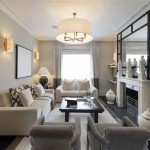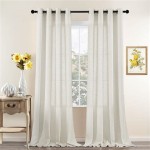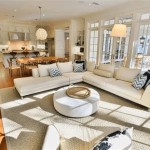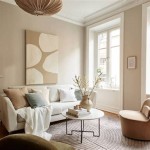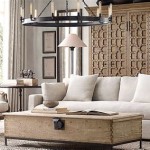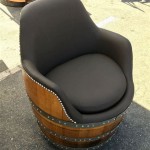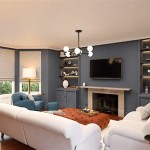Modern TV Wall Units for Living Room: Functionality and Style
The modern living room serves as a central hub for relaxation, entertainment, and social interaction. Optimizing this space requires careful consideration of furniture and layout. A crucial element in many contemporary living rooms is the TV wall unit. These units have evolved beyond simple television stands, transforming into comprehensive storage and display solutions that enhance both the functionality and aesthetic appeal of the room.
Modern TV wall units are designed to accommodate not only the television but also a variety of other media devices, books, decorative items, and even sometimes integrated fireplaces. The integration of these diverse elements requires a thoughtful approach to design, material selection, and spatial arrangement. The goal is to create a cohesive and visually appealing focal point that unifies the living room's overall design scheme.
Benefits of Incorporating a Modern TV Wall Unit
The integration of a modern TV wall unit provides numerous benefits for the living room, encompassing organization, aesthetics, and functionality. The practical aspects of storage and cable management are significant, but the impact on the room's overall design and ambiance is equally important.
One of the primary advantages is enhanced organization. Modern wall units feature a range of storage compartments, including shelves, drawers, and cabinets, designed to house media consoles, gaming systems, DVDs, and other entertainment-related items. This helps to declutter the living room by providing dedicated spaces for these items, preventing them from accumulating on surfaces and creating a disorganized appearance. The ability to conceal cables and wires within the unit further contributes to a cleaner and more streamlined look. This cable management aspect is crucial in modern design, which often prioritizes minimalist aesthetics.
Modern TV wall units can significantly enhance the aesthetic appeal of the living room. Available in a wide array of styles, materials, and finishes, these units can be tailored to complement the existing décor or to serve as a statement piece that defines the room's character. They can be designed to blend seamlessly with the surrounding walls or to stand out as a focal point with contrasting colors and textures. The integration of lighting, such as LED strip lights or spotlights, can further enhance the unit's visual impact, creating a warm and inviting ambiance. Furthermore, the shelving within the unit provides opportunity to display decorative items, artwork, and personal belongings, allowing for the introduction of personal touches that reflect the homeowner's style.
Beyond storage and aesthetics, modern TV wall units contribute to the overall functionality of the living room. By providing a dedicated space for the television and other media devices, the unit helps to optimize the viewing experience. The height and angle of the TV can be adjusted to ensure comfortable viewing from various seating positions. Furthermore, the unit can incorporate features such as integrated sound systems or motorized components, enhancing the entertainment capabilities of the room. The versatility of modern wall units also allows them to be adapted to suit different lifestyles and needs. For example, a unit can be designed with a built-in workspace, providing a convenient area for working from home. Alternatively, it can incorporate a bar area, creating a sophisticated space for entertaining guests.
Key Design Considerations for Modern TV Wall Units
Selecting the right modern TV wall unit requires careful consideration of several design factors, including size, style, materials, and functionality. The unit should be proportioned appropriately for the room's dimensions, complementing the existing décor, and fulfilling the homeowner's specific storage and entertainment needs. Ignoring any of these factors can lead to a less than satisfactory result. The design should be functional as well as aesthetically pleasing.
The size of the TV wall unit is a critical factor to consider. The unit should be scaled appropriately for the size of the living room. A unit that is too large can overwhelm the space, making it feel cramped and cluttered. Conversely, a unit that is too small can appear insignificant and fail to provide adequate storage or visual impact. To determine the appropriate size, it is essential to measure the wall space and consider the dimensions of the television and other media devices that will be housed within the unit. It’s important to consider the viewing distance from the seating area, as that partially dictates the ideal TV size, which in turn affects the wall unit’s dimensions. The proportions of the unit should be balanced and harmonious, creating a sense of visual equilibrium within the room.
The style of the TV wall unit should complement the existing décor of the living room. Modern designs tend to emphasize clean lines, geometric shapes, and minimalist aesthetics. However, there are many variations within the modern style, ranging from sleek and contemporary to rustic and industrial. The choice of style should reflect the homeowner's personal preferences and the overall design scheme of the house. For example, a minimalist living room with neutral colors might benefit from a sleek white or gray wall unit with integrated LED lighting. In contrast, a living room with a more rustic aesthetic might be better suited to a wall unit made from reclaimed wood with exposed hardware. The style of the unit should also be consistent with the other furniture and accessories in the room, creating a cohesive and unified look.
The materials used in the construction of the TV wall unit play a significant role in its appearance, durability, and functionality. Common materials include wood, metal, glass, and laminate. Wood is a popular choice for its warmth, natural beauty, and versatility. It can be stained or painted to match any color scheme and can be used to create a variety of styles, from traditional to contemporary. Metal is often used in modern designs for its sleek and industrial look. It is a durable and low-maintenance material that can be used for framing, shelving, and hardware. Glass is often used for shelving and cabinet doors, adding a touch of elegance and transparency. Laminate is a cost-effective option that can mimic the appearance of wood, metal, or stone. It is a durable and easy-to-clean material that is available in a wide range of colors and patterns. The choice of materials should be based on the homeowner's aesthetic preferences, budget, and functional requirements.
Integrating Practical Features into Modern TV Wall Units
Beyond aesthetics and basic storage, modern TV wall units can be further enhanced by integrating features designed to improve the user experience and address specific needs. These features range from adjustable shelving and hidden compartments to integrated lighting and sound systems.
Adjustable shelving is a valuable feature that allows for customization of the storage space. Shelves can be adjusted to accommodate items of different sizes, such as books, decorative objects, and media equipment. This flexibility ensures that the unit can adapt to changing storage needs over time. Adjustable shelving can also be used to create visual interest by varying the height and spacing of the shelves. Some units feature shelves that can be easily adjusted with a simple mechanism, while others require tools for adjustment. The choice depends on the homeowner's preferences and the frequency with which the shelves need to be adjusted.
Hidden compartments and cabinets offer a discreet way to store items that are not intended for display. These can be used to conceal cables, wires, and other unsightly items, contributing to a cleaner and more organized look. Hidden compartments can also be used to store valuable items or personal belongings that need to be kept out of sight. The design of hidden compartments can vary, ranging from simple doors and drawers to more complex mechanisms that require a key or combination to open. Some units feature hidden compartments that are integrated seamlessly into the overall design, making them difficult to detect. These covert storage areas can significantly improve the functionality of the unit while maintaining a sleek and uncluttered appearance.
Integrated lighting can significantly enhance the ambiance of the living room and highlight the features of the TV wall unit. LED strip lights can be used to illuminate shelves, creating a soft and inviting glow. Spotlights can be used to highlight specific items, such as artwork or decorative objects. Backlighting can be used to create a dramatic effect, casting a glow on the wall behind the unit. The integrated lighting can be controlled with a remote control or smart home system, allowing for easy adjustment of brightness and color. The inclusion of lighting can add a layer of sophistication to the unit, making it a focal point of the room even when the television is not in use. The choice of lighting should be based on the homeowner's aesthetic preferences and the desired ambiance of the living room.

Tv Wall Unit Design For Your Living Room Designcafe

Stylish Living Room Tv Cabinet Design

Brown Teak Wood Carving Modern Living Room Tv Wall Units For Residential

60 Latest Tv Unit Design For Hall 2024 Ideas Panel

Modern Tv Cabinets Designs 2024 For Living Room Interior Walls Units Cabinet Design Unit

44 Modern Tv Wall Units Unique Living Room Cabinet Designs 2024 Unit Design

Buy Jarrah Acacia Wood Tv Cabinet Wall Unit For Living Room Online Ikiru

Tv Wall Unit Design For Your Living Room Designcafe

Stylish Living Room Tv Cabinet Design

Top 50 Modern Tv Unit Design Ideas Latest Wooden Wall For Living Room Designs Easy Decor

